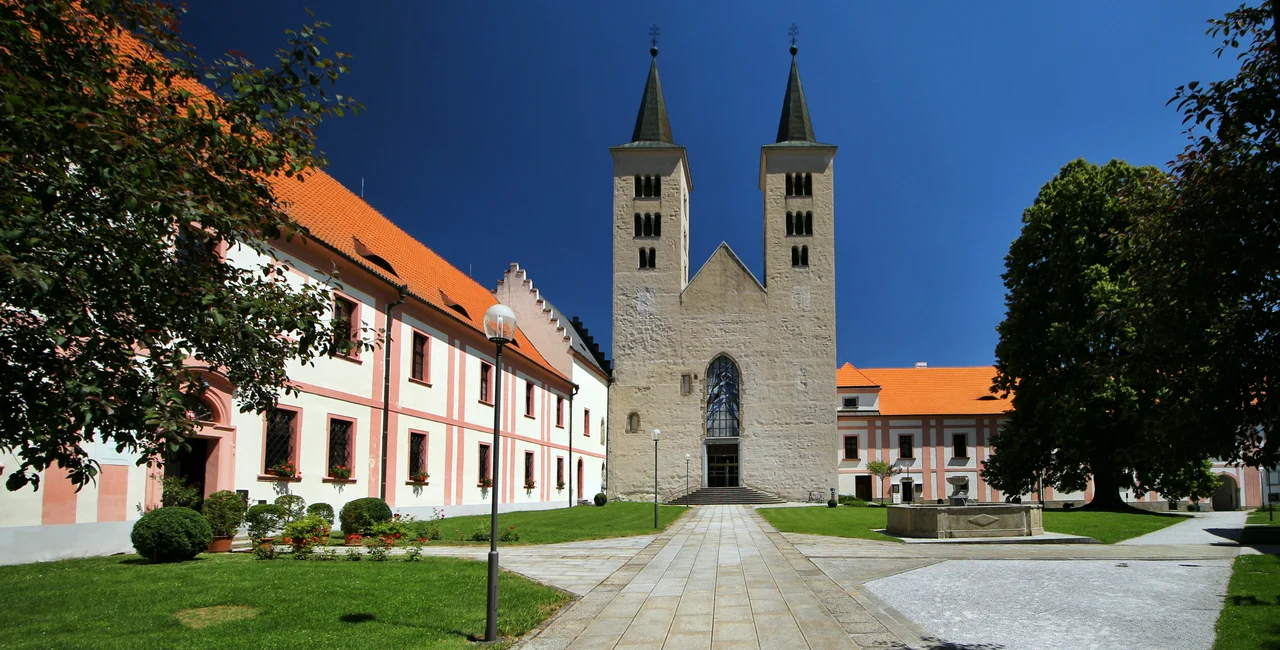A priceless Christian relic has been found in a monastery in the Czech Republic. Archaeologists have discovered a box with a chipped part of a nail allegedly from the cross on which Jesus Christ was crucified. The box was found in a hidden cavity in a treasury room at the monastery in Milevsko, South Bohemia.
The six-centimeter nail is decorated with a small inlaid cross made of 21-karat gold. Researchers have dated the oak wood used to make the shrine to between 260 and 416 AD.
“From a historical point of view and from a symbolic point of view, this is even greater than the reliquary of St. Maurus, a beautifully decorated box that is more than a meter large,” archaeologist Jiří Šindelář, who took part in the discovery, told the Czech News Agency (ČTK).
The reliquary of St. Maurus was discovered in 1985 beneath the boards of a chapel in Bečov nad Teplou in West Bohemia. The 13th-century gold-covered chest has been considered the second-most important historical relic in the Czech Republic, after the crown jewels.
The value of the nail according to Šindelář cannot be quantified. In the Middle Ages, the Milevsko Monastery was one of the richest institutions in what is now the Czech Republic. Representatives of the monastery likely hid the relic during the Hussite Wars, which took place 1419–34. Hussites opposed the use of relics and iconography in practicing the Christian faith.
The monastery was looted during the wars and its records were destroyed, but the looters did not find the hiding place of the nail and its gold-decorated box.
“Because the Hussites destroyed the archive, there was no information that such a thing was here," said Šindelář said.
He added that next year the authenticity of the nail will be verified by other experts.
Prague Archbishop Cardinal Dominik Duka said the relic showed that from the historical viewpoint, the present-day Czech Republic was an important location.
“We were not any marginal part. Major events from the Celtic and Germanic eras already took place here. It has turned out that Christianity did not start here with the Byzantine mission of Saints Cyril and Methodius,” Duka said, referring to the arrival of the missionaries to the Great Moravia Empire in the ninth century AD.
The cavity in the treasury room in which the box was stored has dimensions of 26x16 centimeters. A secret corridor that archaeologists discovered in the spring leads to the room. The corridor measures 60x60 centimeters.
The lid of the box was originally made of a solid gold plate with a wrought inscription IR. “The letters can be understood in this context as an abbreviation for Latin for Jesus Rex, or Jesus King," Šindelář said.
Archaeologists have been researching the Milevsko Monastery for several months. The Premonstratensian monastery is the oldest monastery in South Bohemia. It was founded around 1184 by Jiří z Milevska (George of Milevsko).
There is also some reason to be skeptical, as over the centuries dozens of nails have been linked to the Crucifixion. “Very little reliance can be placed upon the authenticity of the 30 or more holy nails which are still venerated, or which have been venerated until recent times, in such treasuries as that of Santa Croce in Rome, or those of Venice, Aachen, the Escurial, Nuremberg, Prague, etc.,” the Catholic Encyclopedia stated in the early 20th century.
The reference to Prague refers to another nail allegedly from the Crucifixion that is in the golden Coronation Cross of Bohemia, currenlty in the treasury St. Vitus Cathedral in Prague. The cross also has a chip of wood allegedly from the True Cross along with part of the Crown of Thorns and other relics, though their authenticity has long been questioned.
“Probably the majority [of the nails] began by professing to be facsimiles which had touched or contained filings from some other nail whose claim was more ancient. Without conscious fraud on the part of anyone, it is very easy for imitations in this way to come in a very brief space of time to be reputed originals,” the encyclopedia states.
The most famous of the alleged nails from the cross is in tip of the Holy Lance, sometimes called the Spear of Destiny, in Hofburg Palace in Vienna. The spear was in Prague under the reign of Emperor Charles IV, but later was moved to Nuremberg and then passed through several hands before winding up in its current location.












 Reading time: 3 minutes
Reading time: 3 minutes 























